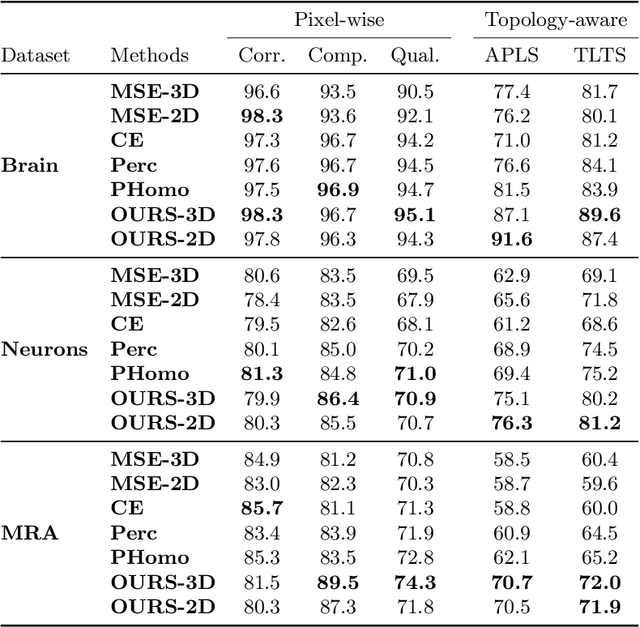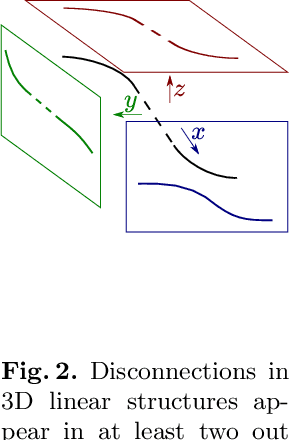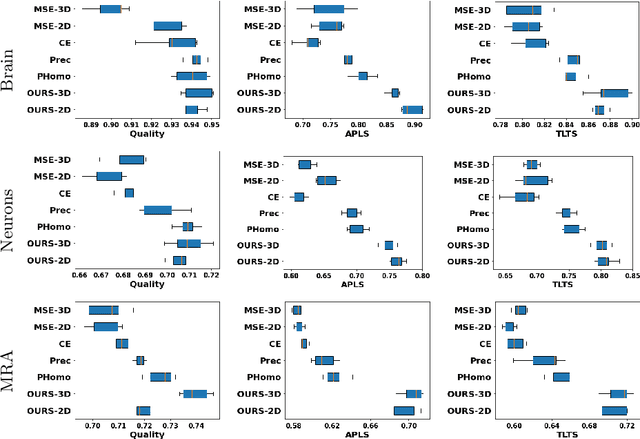Hussein Osman
Enforcing connectivity of 3D linear structures using their 2D projections
Jul 14, 2022



Abstract:Many biological and medical tasks require the delineation of 3D curvilinear structures such as blood vessels and neurites from image volumes. This is typically done using neural networks trained by minimizing voxel-wise loss functions that do not capture the topological properties of these structures. As a result, the connectivity of the recovered structures is often wrong, which lessens their usefulness. In this paper, we propose to improve the 3D connectivity of our results by minimizing a sum of topology-aware losses on their 2D projections. This suffices to increase the accuracy and to reduce the annotation effort required to provide the required annotated training data.
An Efficient Language-Independent Multi-Font OCR for Arabic Script
Sep 18, 2020



Abstract:Optical Character Recognition (OCR) is the process of extracting digitized text from images of scanned documents. While OCR systems have already matured in many languages, they still have shortcomings in cursive languages with overlapping letters such as the Arabic language. This paper proposes a complete Arabic OCR system that takes a scanned image of Arabic Naskh script as an input and generates a corresponding digital document. Our Arabic OCR system consists of the following modules: Pre-processing, Word-level Feature Extraction, Character Segmentation, Character Recognition, and Post-processing. This paper also proposes an improved font-independent character segmentation algorithm that outperforms the state-of-the-art segmentation algorithms. Lastly, the paper proposes a neural network model for the character recognition task. The system has experimented on several open Arabic corpora datasets with an average character segmentation accuracy 98.06%, character recognition accuracy 99.89%, and overall system accuracy 97.94% achieving outstanding results compared to the state-of-the-art Arabic OCR systems.
TinBiNN: Tiny Binarized Neural Network Overlay in about 5,000 4-LUTs and 5mW
Mar 05, 2019



Abstract:Reduced-precision arithmetic improves the size, cost, power and performance of neural networks in digital logic. In convolutional neural networks, the use of 1b weights can achieve state-of-the-art error rates while eliminating multiplication, reducing storage and improving power efficiency. The BinaryConnect binary-weighted system, for example, achieves 9.9% error using floating-point activations on the CIFAR-10 dataset. In this paper, we introduce TinBiNN, a lightweight vector processor overlay for accelerating inference computations with 1b weights and 8b activations. The overlay is very small -- it uses about 5,000 4-input LUTs and fits into a low cost iCE40 UltraPlus FPGA from Lattice Semiconductor. To show this can be useful, we build two embedded 'person detector' systems by shrinking the original BinaryConnect network. The first is a 10-category classifier with a 89% smaller network that runs in 1,315ms and achieves 13.6% error. The other is a 1-category classifier that is even smaller, runs in 195ms, and has only 0.4% error. In both classifiers, the error can be attributed entirely to training and not reduced precision.
 Add to Chrome
Add to Chrome Add to Firefox
Add to Firefox Add to Edge
Add to Edge